This study retrospectively evaluated the 4- to 10-year results of 105 arthroscopic rotator cuff repairs performed by a single surgeon between 1990-1996. At average follow-up of 75 months, 94% of the 95 patients available had good to excellent results according to the modified UCLA shoulder scoring system. The study demonstrates that arthroscopic rotator cuff repair can provide excellent long-term clinical outcomes for repair of full-thickness rotator cuff tears.
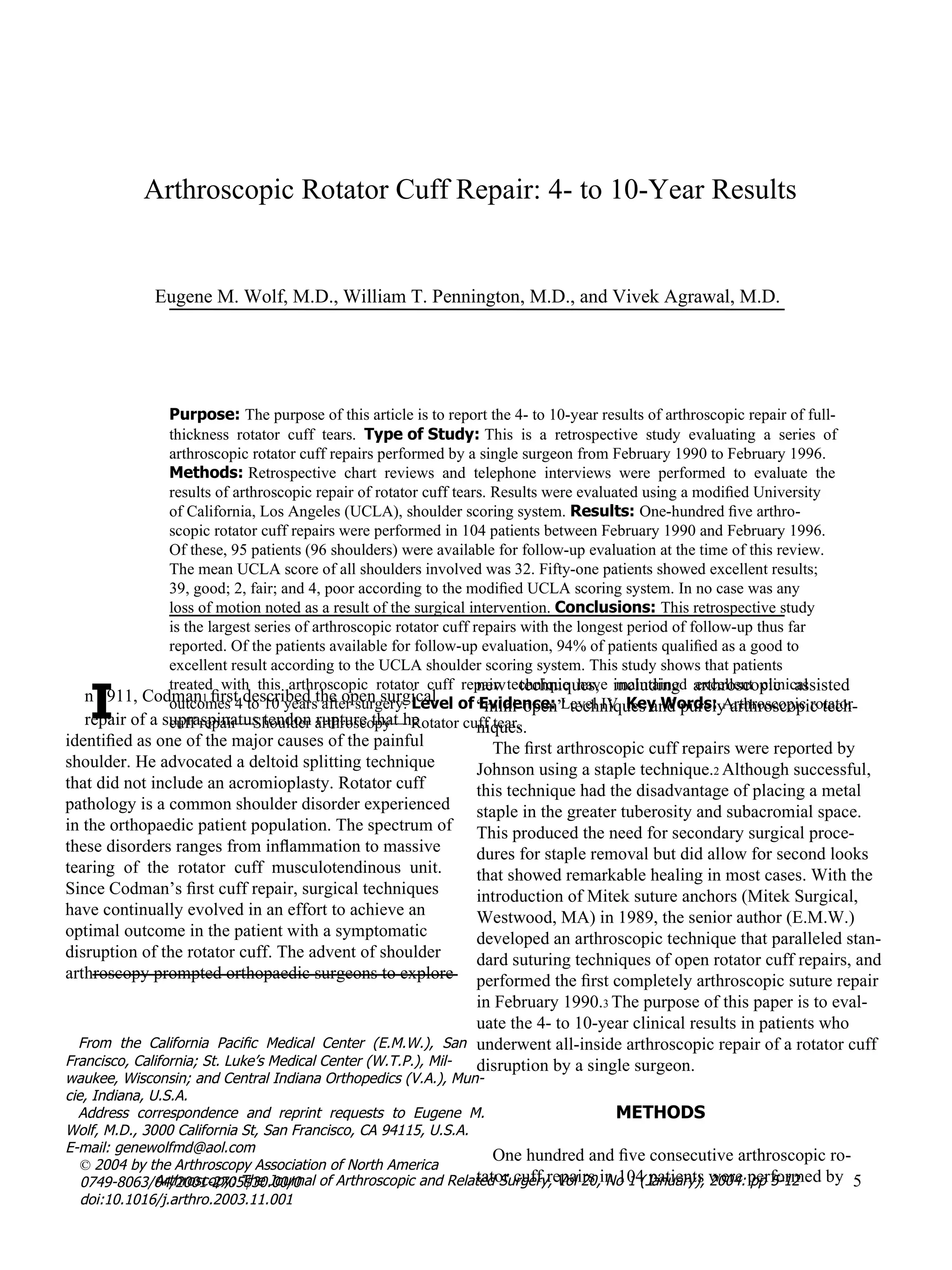
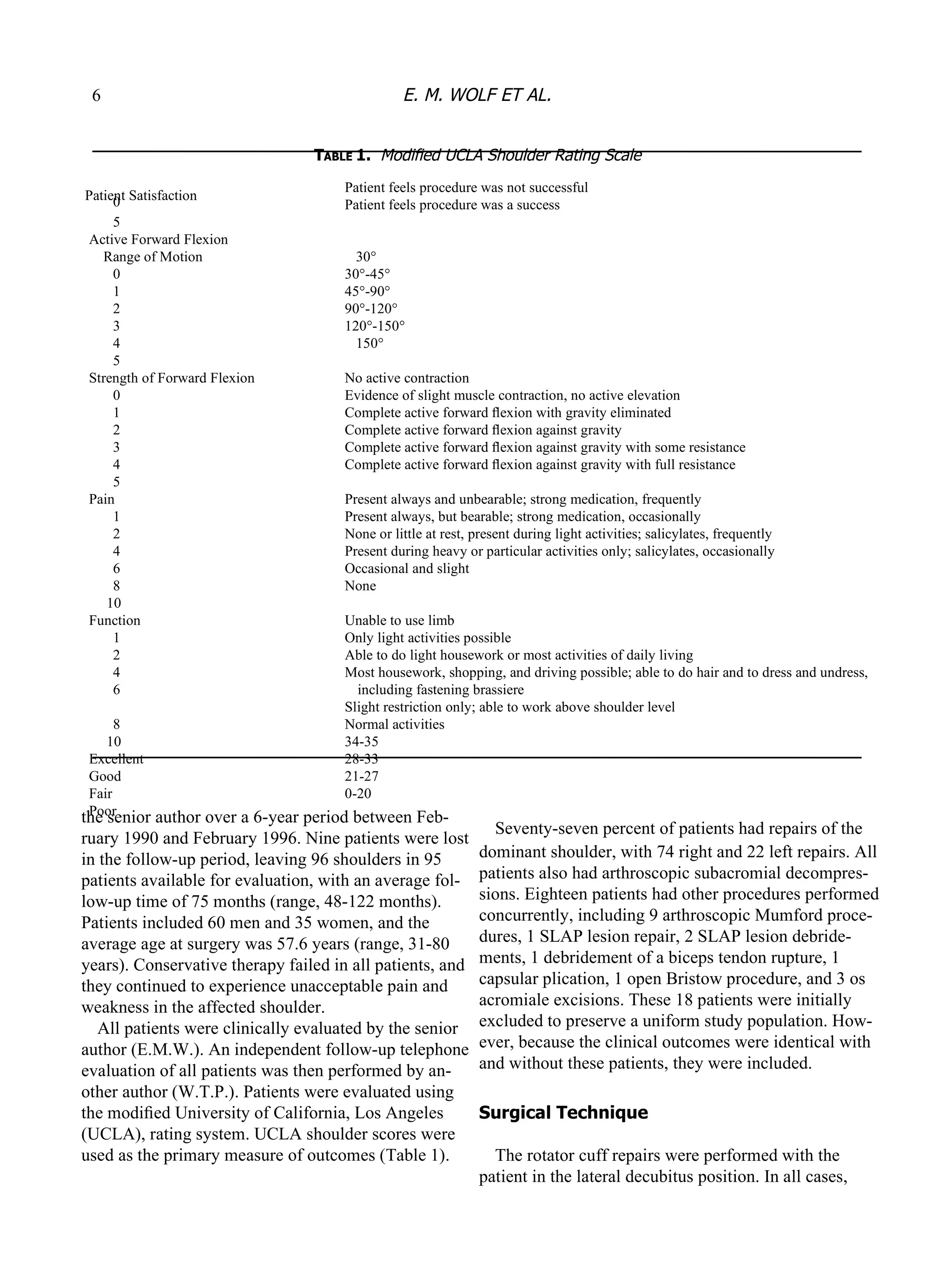
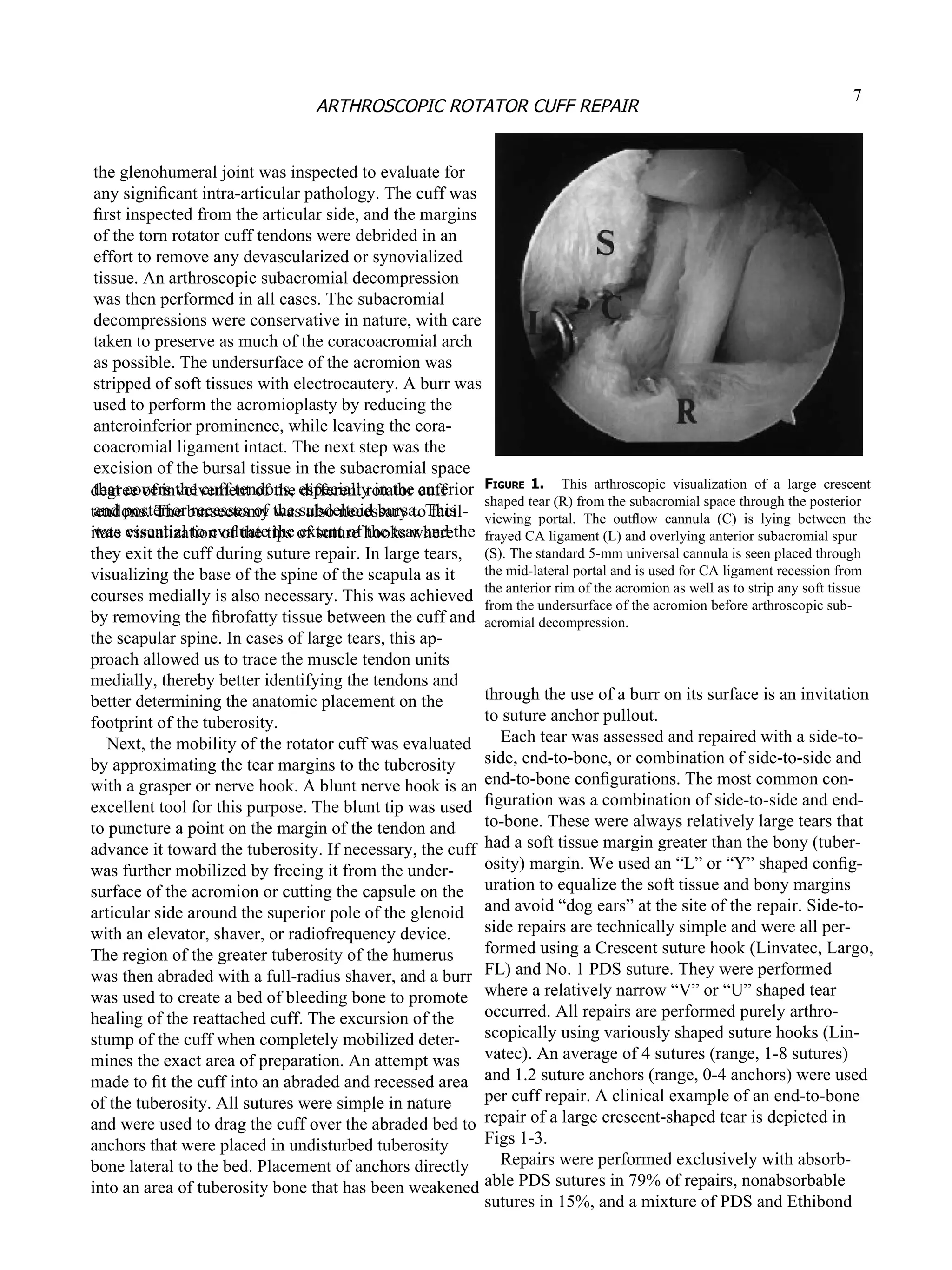
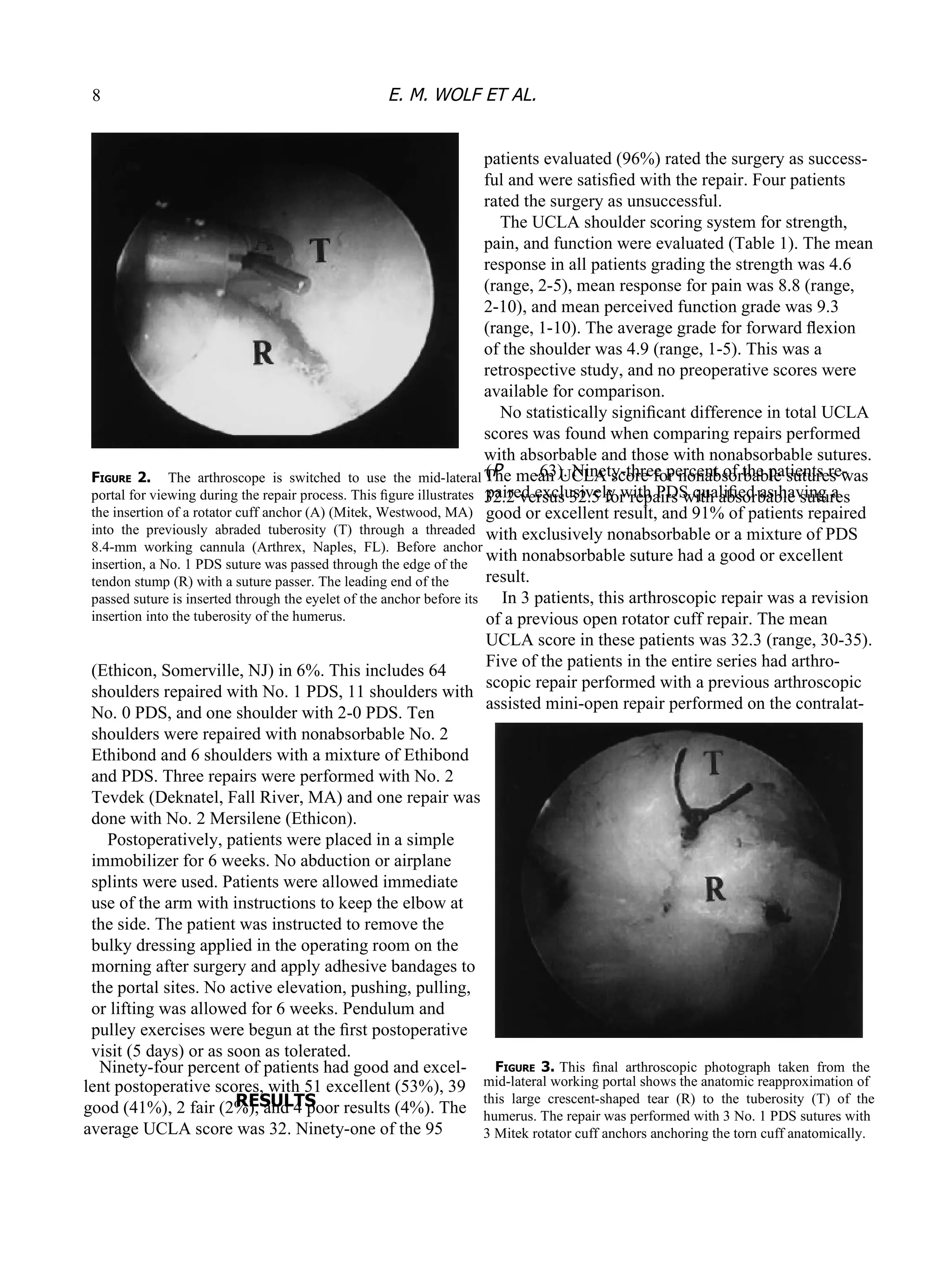
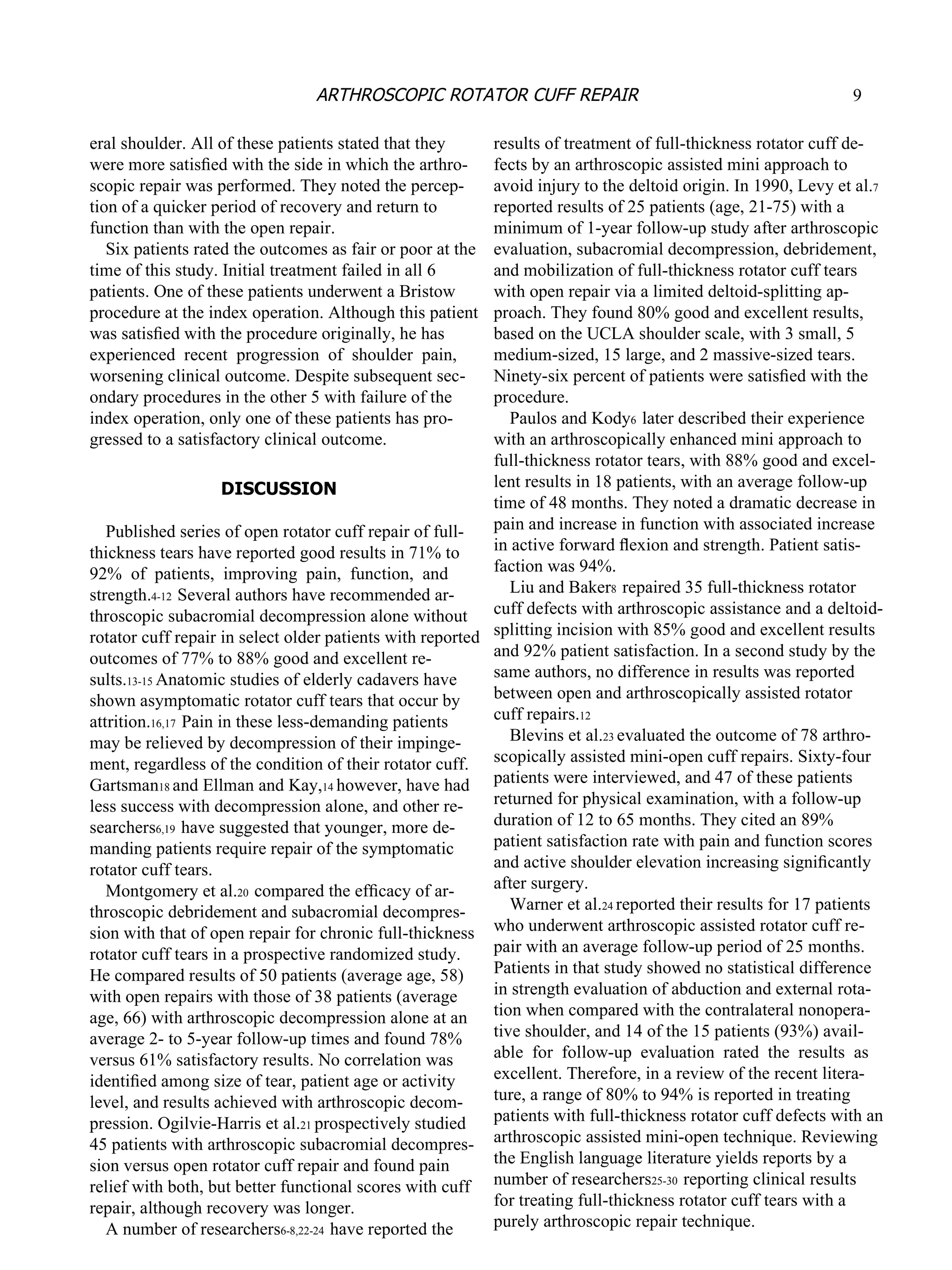
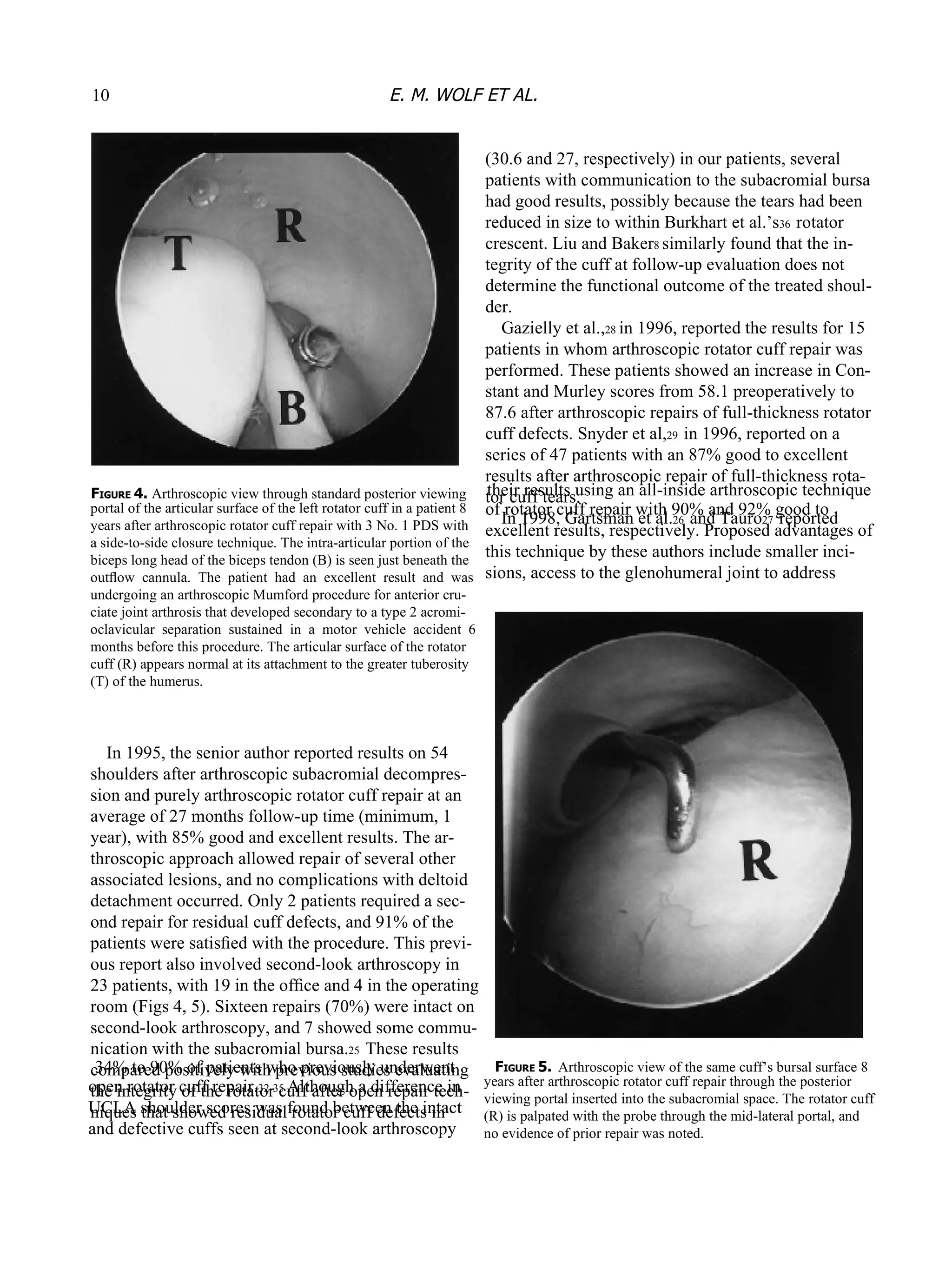
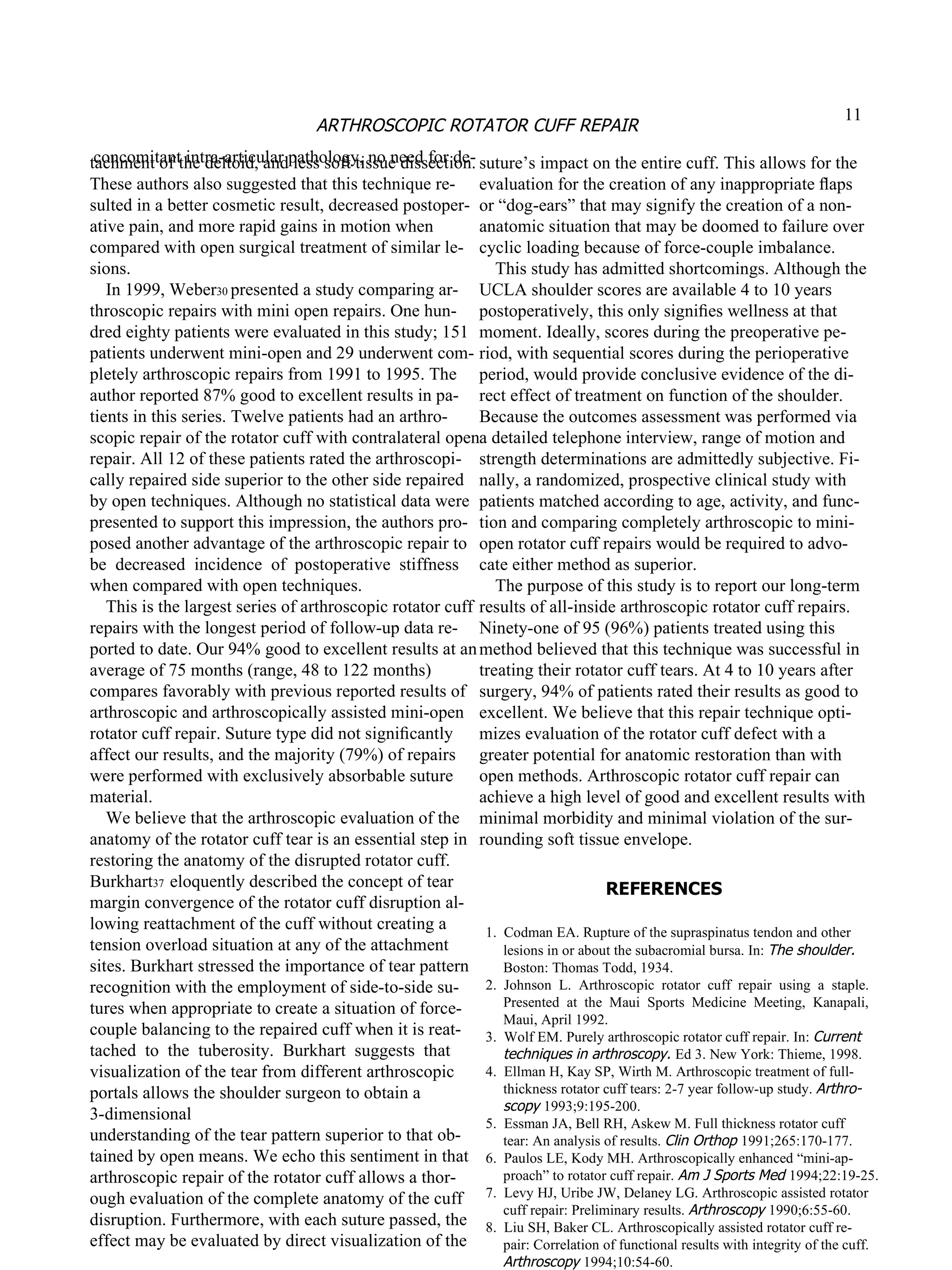
![results of anterior acromioplasty and repair. Presented at the Fourth International Conference on Surgery of the Shoulder. New York, June 1989. 10. 11. 12. 13. 14. 15. 16. 17. 18. 19. 20. 21. 22. 23. 24. Bjorkenheim JM, Paavolainen P, Ahovuo J, Slatis P. Surgical repair of the rotator cuff and surrounding tissues: Factors influencing the results. Clin Orthop 1988;236:148-153. Packer NP, Calvert PT, Bayley JI, Kessel L. Operative treat- ment of chronic ruptures of the rotator cuff of the shoulder. J Bone Joint Surg Br 1983;65:171-175. Wolfgang GL. Surgical repair of tears of the rotator cuff of the shoulder: Factors influencing the result. J Bone Joint Surgery Am 1974;56:14-26. Levy HJ, Gardner RD, Lemak LJ. Arthroscopic subacromial decompression in the treatment of full thickness rotator cuff tears. Arthroscopy 1991;7:8-13. Ellman H, Kay SP. Arthroscopic subacromial decompression for chronic impingement: Two to five year results. J Bone Joint Surg Br 1991;73:395-398. Esch JC, Ozerkis LR, Helgager JA, et al. Arthroscopic sub- acromial decompression: results according to the degree of rotator cuff tear. Arthroscopy 1988;4:241-249. Grant JCB, Smith CG. Age incidence of rupture of the su- praspinatus tendon. Anat Rec 1948;100:666. Keyes EL. Observations on rupture of the supraspinatus based upon a study of seventy-three cadavers. Ann Surg 1933;97: 241. Gartsman GM. Arthroscopic acromioplasty for lesions of the rotator cuff. J Bone Joint Surg Am 1990;72:169-180. Cotton RE, Rideout DF. Tears of the humeral rotator cuff: A radiologic and pathologic necropsy survey. J Bone Joint Surg Br 1964;46:314-328. Montgomery TJ, Yerger B, Savoic FH. Management of rotator cuff tears: A comparison of arthroscopic debridement and surgical repair. J Shoulder Elbow Surg 1994;3:70-78. Ogilvie-Harris DJ, Demaziere A. Arthroscopic debridement versus open repair for rotator cuff tears: A prospective cohort study. J Bone Joint Surg Br 1993;75:416-420. Liu SH, Baker CL. Comparison of open and arthroscopically assisted rotator cuff repair. Presented at the Annual Meeting of the American Academy of Orthopaedic Surgeons, San Fran- cisco, February1993. Blevins FT, Warren RF, Cavo C, et al. Arthroscopic assisted rotator cuff repair: Results using a mini-open deltoid splitting approach. Arthroscopy 1996;12:50-59. Warner JJ, Goitz RJ, Irrgang JJ, Groff YJ. Arthroscopic- assisted rotator cuff repair: patient selection and treatment outcome. J Shoulder and Elbow Surg 1997;6:463-672. 25. Baylis RV, Wolf EM. Arthroscopic rotator cuff repair: Clinical and second look assessment. Presented at the annual meeting of the Arthroscopy Association of North America. San Fran- cisco, CA; May, 1995. 26. Gartsman GM, Khan M, Hammerman SM. Arthroscopic repair of full-thickness tears of the rotator cuff. J Bone and Joint Surg Am 1998;80:832-840. 27. Tauro JC. Arthroscopic rotator cuff repair: Analysis of tech- nique and results at a 2- and 3- year follow-up. Arthroscopy 1998;14:45-51. 28. Gazielly DF, Gleyze P, Montagnon C, Thomas T. Arthro- scopic repair of distal supraspinatus tears with Revo screw and permanent mattress sutures: A preliminary report. Annual Meeting of the American Shoulder and Elbow Surgeons, Ame- lia Island, FL, March 1996. 29. Snyder SJ, Mileski RA, Karzel RP. Results of arthroscopic repair. Annual Meeting of the American Shoulder and Elbow Surgeons, Amelia Island, FL, March 1996. 30. Weber SC. Arthroscopic versus mini- open rotator cuff repair. Arthroscopy Association of North America Fall Course, San Diego, CA, 1999. 31. Wolf EM, Durkin RC. Arthroscopic rotator cuff repair. Two to four year follow-up. Presented at the Annual Meeting of the Arthroscopic Association of North America, San Francisco, CA, April 1995. 32. Lundberg BJ. The correlation of clinical evaluation with op- erative findings and prognosis in rotator cuff rupture. In: Bayley, Kessel L, eds. Shoulder surgery. Berlin: Springer, 1982:35-38. 33. Calvert PT, Packer NP, Stoker DJ, et al. Arthrography of the shoulder after operative repair of the torn rotator cuff. J Bone Joint Surg Br 1986;68:147-150. 34. Harryman DT, Mack LA, Wang KY, et al. Repairs of the rotator cuff: Correlation of functional results with integrity of the cuff. J Bone Joint Surg Am 191;73:982-989. 35. Gazielly DF, Gleyze P, Montagnon C. Functional and anatom- ical results after rotator cuff repair. Clin Orthop 1994;304:43- 53. 36. Burkhart SS, Esch JC, Jolson RS. The rotator crescent and rotator cable: An anatomic description of the shoulder’s “sus- pension bridge.” Arthroscopy 1993;9:611-616. [Published er- ratum appears in Arthroscopy 1994;10:236.] 37. Burkhart SS. A stepwise approach to arthroscopic rotator cuff repair based on biomechanical principles. Arthroscopy 2000; 16:82-90. 12 E. M. WOLF ET AL.](https://image.slidesharecdn.com/rotator-cuff-study-110227124728-phpapp01/75/Rotator-cuff-study-8-2048.jpg)